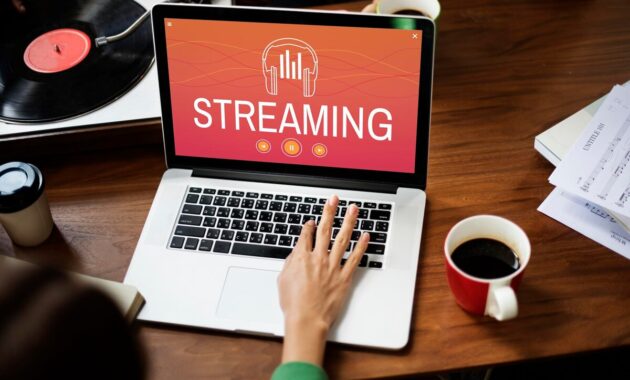New ideas and changes are shaping the future of video viewing. As technology improves, the way people use digital media is changing quickly. After some early tests, video streaming is a regular part of our lives. Video viewing has changed a lot from RealPlayer to YouTube to Netflix.
Beginnings Of Video Streaming:
Streaming videos began in a small way. At first, it was only used for short, bad movies that took a long time to clear. These limits were caused by the lack of good compression tools and the fact that the internet infrastructure was still relatively new. RealPlayer was the first video player from RealNetworks.
Even though video streaming was new, the early versions had annoying breaks and blurry pictures. The Windows Media Player from Microsoft was another early player. Even with these bugs, a streaming change was starting to happen.
Streaming Revolution: Realplayer To Youtube
YouTube changed the way people watch videos online. Since it started in 2005, YouTube has allowed anyone to make and share movies. This decentralization of content creation and delivery changed everything, giving people and groups access to viewers worldwide.
YouTube quickly became where amateur and expert movies were shared, setting the standard for digital media. The success of YouTube showed that ad-supported material could work, which helped many people make money from their movies and start their online businesses.
The Rise Of Streaming Services:
With the rise of the fast internet, streaming apps quickly became the primary way that material was shared. Netflix made viewing with a membership very famous. It was the first company to offer subscriptions instead of single sales. Streaming services like Amazon Prime and Hulu have made the market more diverse. These services had vast collections of movies and TV shows and put a lot of money into making their content, which changed the entertainment industry.
HD, 4K, And Beyond Technological Advancements
Using video streaming tools made the quality of the content better. HD streaming became the rule, and the pictures were better and more realistic. As people wanted better quality, 4K streaming came out, which gave us fantastic sharpness and detail. Adaptive streaming and H.265 (HEVC) video codecs improve streaming and use less data. These technological improvements brought about a new era of live movies, which mixed television and internet content.
Mobile Streaming And On-the-go Experience:
Video viewing has changed because of smartphones and other mobile devices. Users wanted to get to their favorite information on the go. Streaming sites immediately made mobile apps so users could easily view the material. Adaptive views and streams that used little data were needed for this move. They were using the portability of smartphones and tablets, and streaming services made material optimized for mobile devices. Mobile streaming is integral to today’s media viewing because it’s portable.
Live Streaming And Chatting:
How we use the internet has changed since live broadcasts came along. On Twitch and Periscope, many people now show their lives, games, and events. The interactive live streaming was one of a kind. Streams let fans talk to each other, give, and change what happens in games. This contact strengthened the bonds between creators and viewers and changed the entertainment and game industries.
The Future Of Streaming Videos:
Video streaming will change how people use and connect with digital media. As technology and customer needs change, the world of video streaming will also change a lot. We look at the vast opportunities this growing business has ahead of it.
Pursuing Resolution: 8k And Beyond
Video streaming will get even more precise and more detailed in the future. Images of 8K quality (7,680 x 4,320 pixels) look natural. This detail level should improve healthcare, schooling, home entertainment, and design. As streaming services look into 8K content, a new era of visual experience is beginning.
Vr And Ar Streaming Revolution:
VR and AR will change how streaming works.VR equipment will put people in 3D worlds that are more engaging than anything else on the market. By combining digital content with the real world, AR will improve learning, playing games, and interacting with others. Streaming VR and AR sites will let people connect with stories, go on virtual tours, and play realistic games.
Using Ai For Personalized Content:
AI will change how television streams work. Machine learning systems will examine users’ past and tastes to give them specific material. These ideas will include what to watch, when, and where to watch it. This will make the entertainment setting more personal.
Improved Interactivity:
Streaming will be used for more than just watching videos in the future. Streaming will focus on material that you can connect with. Viewers will be able to connect with characters, storylines, and real-life events, making them feel like they have a hand in writing the show. This will turn fun into active involvement by getting more people involved.
The Proliferation Of 5g Streaming:
5G networks will make streaming smooth. With 5G’s faster data speeds, lower lag, and better reliability, even the best videos will play without problems. It will also make 4K and 8K content easier to find, live streaming faster, and mobile streaming better.
The Integration Of E-commerce
E-commerce will be a part of streaming services. Customers can buy things they see on TV or in movies, which makes the customer experience smoother and more direct. This mix will make the links between entertainment and online shopping stronger.
Sustainable Streaming:
People use more power when they stream more. In the future, streaming services will put ecology first to lessen their effect on the earth. It is possible to use green data centers, technology that uses less energy, and sustainable streaming ecosystems.
Globalization And Localization:
There will be more global viewing, with a focus on localization. Streaming services will give bilingual content and be sensitive to different cultures in various places. Global unique material will make a more open and varied media environment possible.
The History Of Content Curation:
Producers will be able to choose more focused content with the help of AI-powered tools. Content creators can use these technologies to look at feedback, trends, and viewers’ viewing habits to make their content better and keep viewers interested.
Conclusion
Video streaming has transformed information consumption. From RealPlayer’s modest beginnings to YouTube’s global success, streaming has become essential to our digital lives. Netflix and better visuals have raised video quality.
Mobile streaming has made material more accessible, and live streaming has revolutionized how we have fun. AI-driven customization, immersive VR and AR experiences, and game-changing 5G networks make the future exciting. Online video streaming is constantly altering how people utilize digital content.


